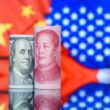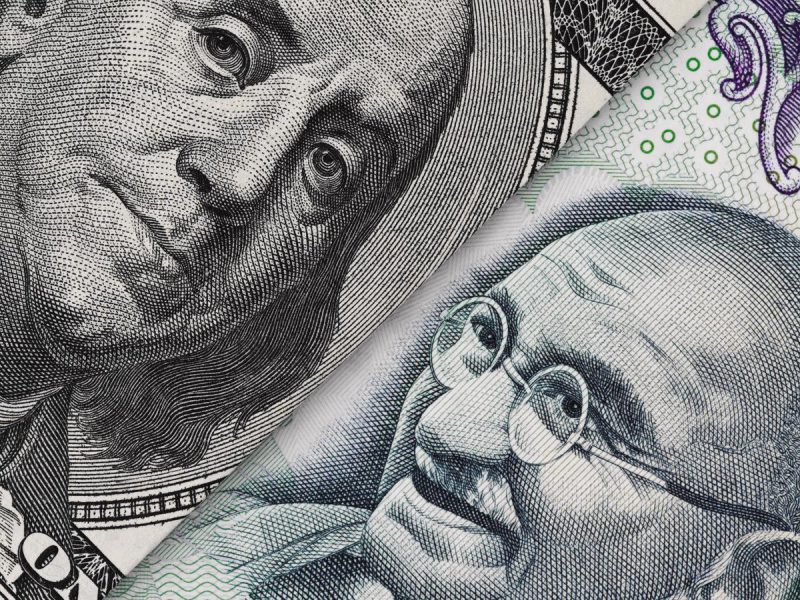The Indian rupee edged higher against the US dollar on Wednesday after foreign banks initiated mild sell-offs in the markets. The move has helped the rupee and other leading Asian currencies remain steady during the US and China trade talks. The rupee was hovering at 85.46 minutes after the opening bell with a surge of 0.2% from its previous close at 85.60.
Reuters reported that foreign banks dumped US dollars as China agreed on a framework to ease trade tensions. At least two large foreign banks, most likely on behalf of institutional custodial clients were behind the sell-off. The development eventually “helped the rupee out,” said a trader at a state-run bank.
Also Read: De-Dollarization: Wall Street Banks Forecast Further US Dollar Weakness
This limited the US dollar’s growth at the DXY index and it failed to climb above the 100 mark. The DXY index remains in the green on Wednesday but is at 99.11 with an uptick of 0.01%. Previously, the greenback rallied during new trade talks but this time around, local currencies are gaining the edge.
Along with the rupee, other South Asian currencies appeared to remain rangebound with the US dollar. However, the mild spike in value on Wednesday might have not been possible without foreign banks offloading the US dollars. Market interference dimmed the US dollar’s prospects indicating that the DXY index could sustainably scale up next.
Also Read: De-Dollarization: Which Currency Will Replace the US Dollar?
Rupee & Asian Currencies Rise After Foreign Banks Initiate US Dollar Sell-Off


MUFG Bank said in a note that US and China trade talks could help Asian currencies consolidate against the US dollar. The positive conclusion of the talks “could help Asian currencies to consolidate their recent gains against the US dollar,” the note read. Currency traders are now betting on Asian currencies after they received an influx of funds from global institutional investors. In conclusion, the tariffs and trade wars have led to the USD remaining under severe pressure.





